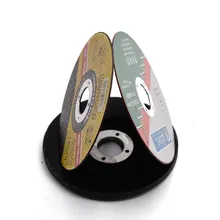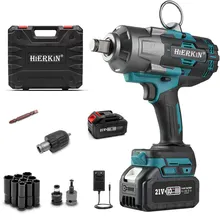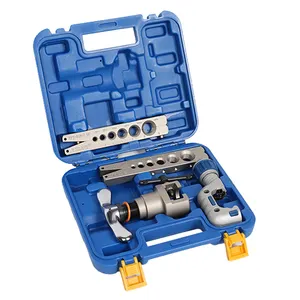Introduction
In the ever-evolving world of hand tools, the plastic wrench has emerged as a surprising yet effective innovation. This article delves into the history of tool evolution, the unique properties of plastic wrenches, and the unexpected benefits they offer. From their lightweight nature to their resistance to corrosion and rust, these tools are revolutionizing the toolbox. We also explore their affordability, environmental impact, and how they can be integrated into your toolbox. Join us as we uncover the unforeseen benefits of a plastic wrench and how it can transform your tool collection.
The Evolution of the Toolbox
Hand tools have been an integral part of human history, dating back to the Stone Age when stone tools were used for hammering and cutting. As civilizations advanced, so did the materials and methods used to create these tools. The Bronze Age saw the introduction of sharper and harder tools made from copper and tin alloys. The Iron Age further improved the strength and durability of tools. The industrial revolution marked a significant shift in tool manufacturing, transitioning from craftsperson made to factory produced. This evolution of tools reflects our constant pursuit of efficiency and effectiveness.
Understanding the Plastic Wrench
Plastic wrenches are a surprising yet effective metal substitute, especially in industries like automotive. They offer potential savings in cost and weight due to their low density and formability. These wrenches can withstand a torque of over 18 Nm, similar to their metal counterparts. They are electrically insulating, resistant to common workshop substances like oils and greases, and can be used at room temperature. The development of a plastic wrench demonstrates the procedure for implementing metal substitution projects, highlighting the versatility and benefits of high-performance plastics.
The Unforeseen Benefits of a Plastic Wrench
The plastic wrench, initially designed as a metal substitute, revealed unexpected benefits. Cyclists appreciated the lightweight tool, and it found use in workshops for employees with metal allergies. These advantages were not the primary focus during development, but they highlight the versatility of plastic. The plastic wrench is not only lightweight but also suitable for those with metal sensitivities, demonstrating the unforeseen benefits of this innovative tool.
Lightweight and Easy to Handle
Due to their low density, plastic wrenches are significantly lighter than their metal counterparts. This makes them easier to handle and reduces fatigue during prolonged use, making them an excellent choice for both professional and DIY applications.
Resistant to Corrosion and Rust
Plastic wrenches offer a significant advantage over their metal counterparts when it comes to resistance to corrosion and rust. Unlike metal, which rusts when it comes into contact with corrosive products, plastic doesn’t “rust” in response to corrosion. Instead, it deteriorates. Some plastics even dissolve when they come into contact with certain solvents. However, the right type of plastic, designed to withstand corrosive substances, will not deteriorate or lose its shape. This makes plastic wrenches an ideal choice for environments where they may be exposed to corrosive chemicals.
Non-Conductive Nature
Plastic wrenches, like other plastic tools, are known for their non-conductive nature. This makes them an ideal choice for electrical applications where safety is paramount. The insulating properties of plastic help to control the flow of electricity, reducing the risk of electrical shocks. This is particularly important in hazardous conditions or when working with high-voltage systems. Furthermore, certain plastics can withstand a wide range of temperatures, making them suitable for various environments. Thus, the non-conductive nature of a plastic wrench adds an extra layer of safety, making it a valuable addition to any toolbox.
Affordability and Accessibility
Plastic wrenches, like other injection molded products, are cost-effective due to the efficient manufacturing process. The cost of injection molding is influenced by various factors such as the complexity of the design and the quantity produced. However, simpler molds, often made from materials like aluminum or steel, are more affordable. Furthermore, the use of multi-cavity molds can reduce individual mold costs. The choice of resin also impacts the cost, with higher purity resins being more expensive. Despite these costs, the overall affordability and accessibility of plastic wrenches make them a smart choice for many tool users.
Environmental Impact
Plastic wrenches contribute positively to the environment in several ways. Their lightweight nature reduces carbon emissions during transportation. They also have a longer lifespan due to their resistance to corrosion and impact, reducing the need for frequent replacements. Moreover, plastic is easier to recycle than many other materials, offering a sustainable solution for tool production. Lastly, the energy savings from plastic production compared to traditional materials like metal further reduces their environmental footprint.
Reduced Carbon Footprint
The production, usage, and disposal of plastic, including plastic wrenches, contribute to carbon emissions. However, compared to their metal counterparts, plastic wrenches have a significantly reduced carbon footprint. The emissions from plastic production are synonymous with the average carbon footprint per person in the US. Plastic is derived from petroleum, a non-renewable resource, but plastic products like wrenches are often recyclable, reducing their overall carbon footprint. The manufacturing process of plastic wrenches also releases fewer greenhouse gases directly into the atmosphere compared to metal wrenches.
Recyclability
Recycling a toolbox, including items like a plastic wrench, has various beneficial impacts. It reduces waste in landfills, preventing soil contamination and pollution. It also conserves natural resources, as materials for new products don’t have to be extracted from nature. Moreover, recycling saves energy as making items from recycled materials generally requires less energy than making them from scratch. Toolboxes can be made from recyclable materials, including plastic like polypropylene. Not recycling your toolbox can contribute to landfill waste and potential environmental harm.
Integrating the Plastic Wrench into Your Toolbox
The 2-piece 16" rubber strap wrench set with plastic handles available on Alibaba.com is a must-have addition to your toolbox. Ideal for various tasks like removing an oil filter, installing a hard-to-reach drain pipe, or simply opening and closing bottles and jars, these plastic wrenches offer comfort and dependability. The cushioned plastic handles make any job more comfortable, while the reinforced rubber straps grip almost anything with reliable durability. Integrating this plastic wrench into your toolbox can make tasks easier and more efficient.
Conclusion
The plastic wrench, a seemingly simple innovation, has proven to be a game-changer in the world of hand tools. Its unique properties, such as being lightweight, resistant to corrosion, and non-conductive, make it a versatile and safe addition to any toolbox. The affordability and accessibility of plastic wrenches further enhance their appeal. Moreover, their reduced carbon footprint and recyclability contribute to a more sustainable environment. By integrating a plastic wrench into your toolbox, you can reap these benefits and revolutionize your tool collection. The plastic wrench is not just a tool; it's a testament to human ingenuity and our constant pursuit of efficiency and effectiveness.











































 浙公网安备 33010002000092号
浙公网安备 33010002000092号 浙B2-20120091-4
浙B2-20120091-4